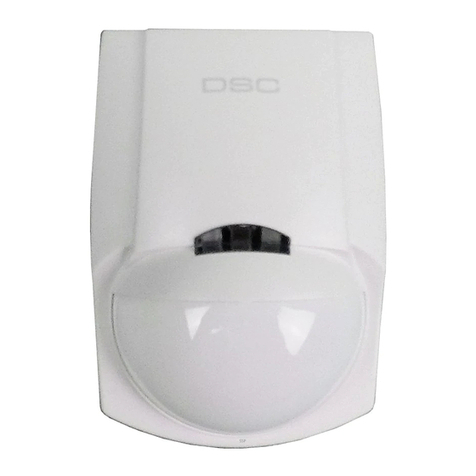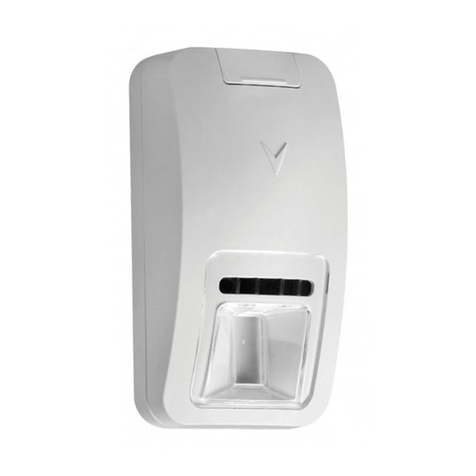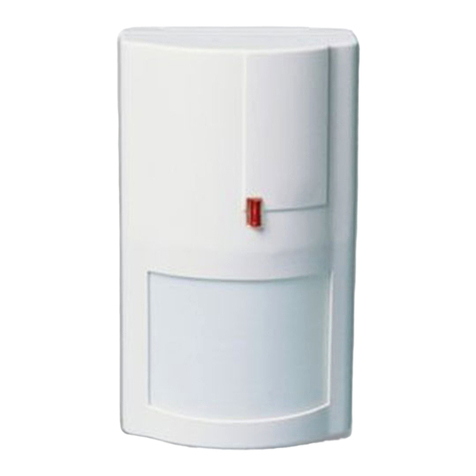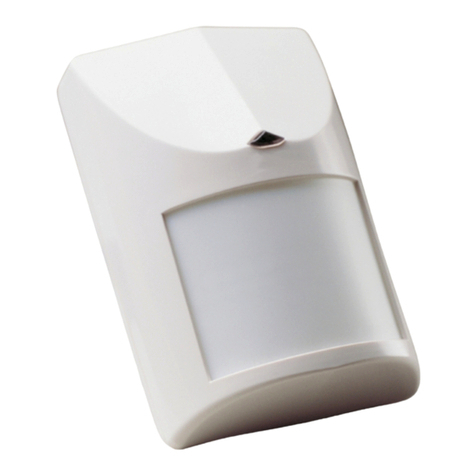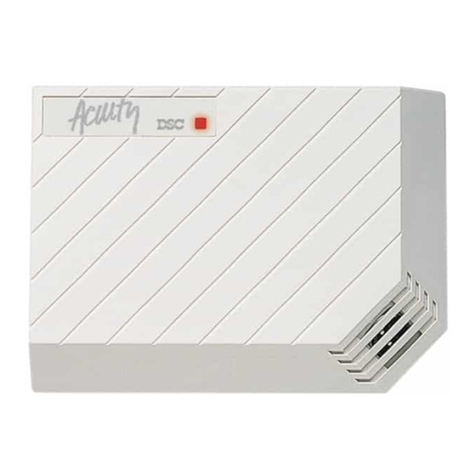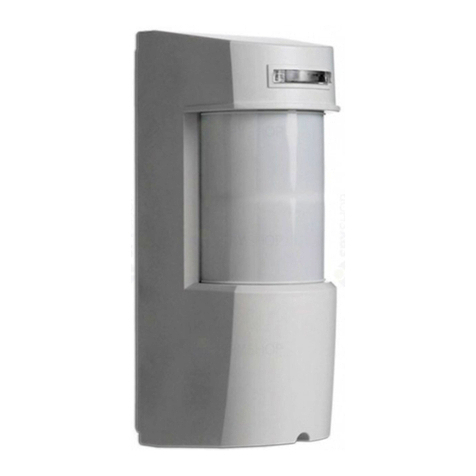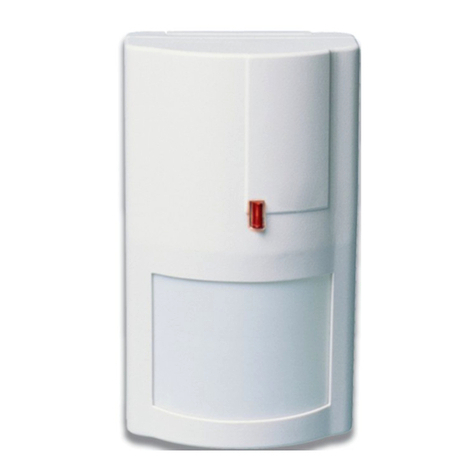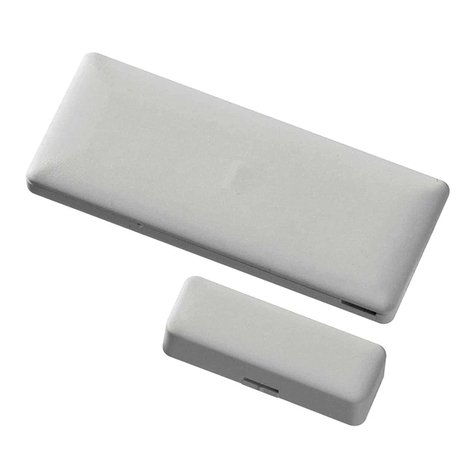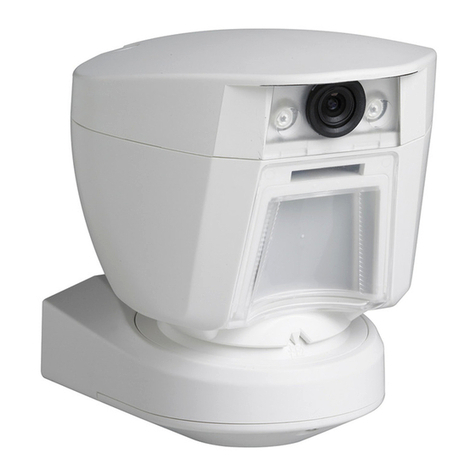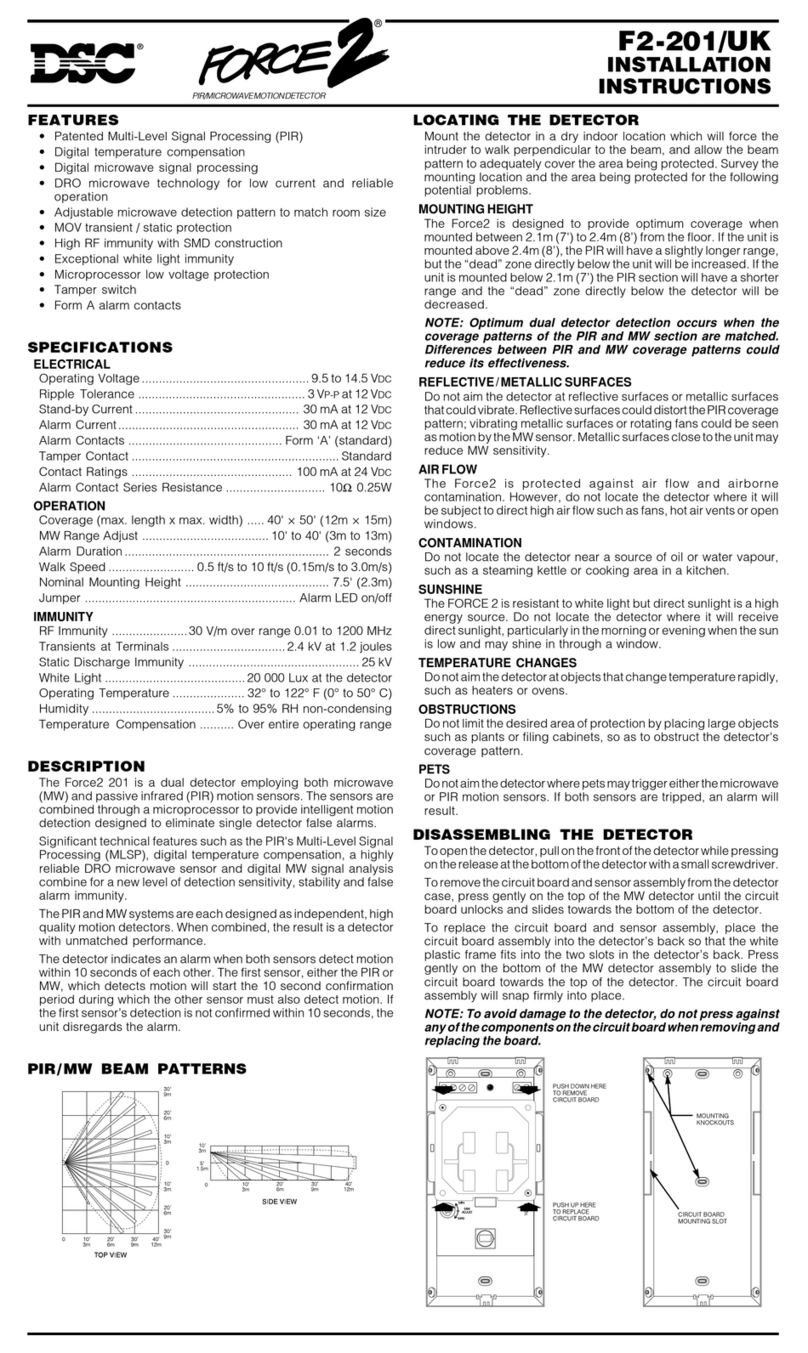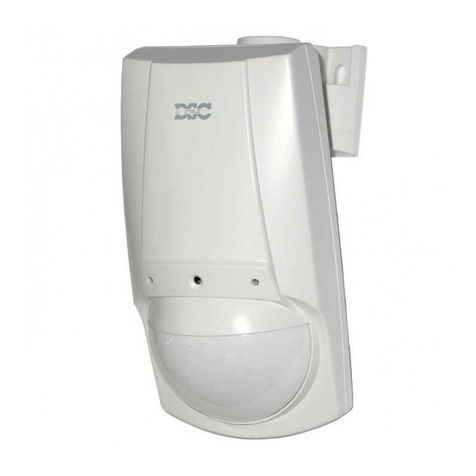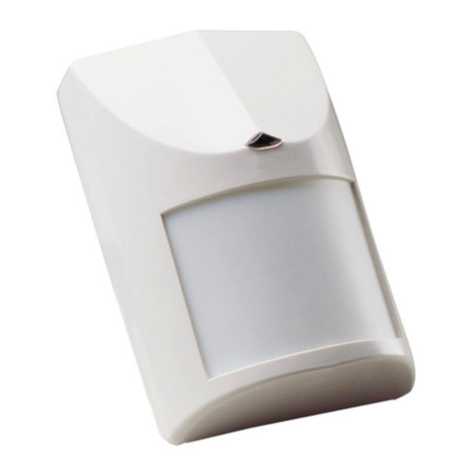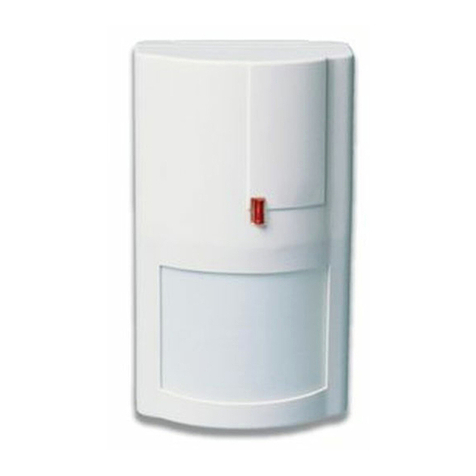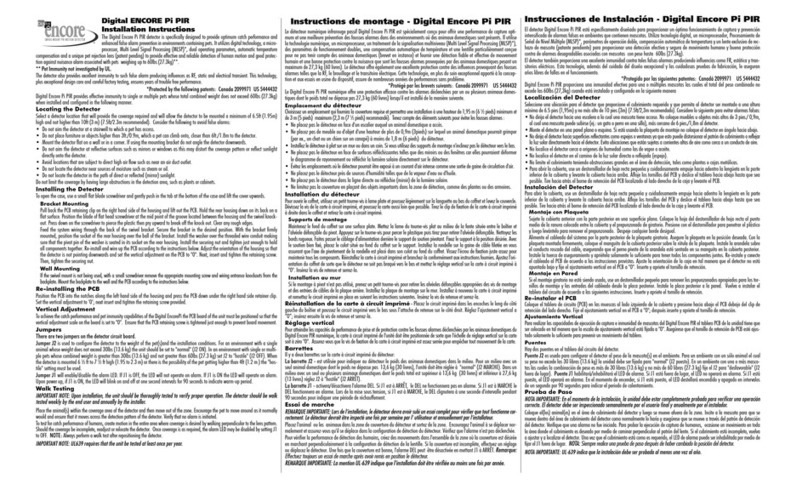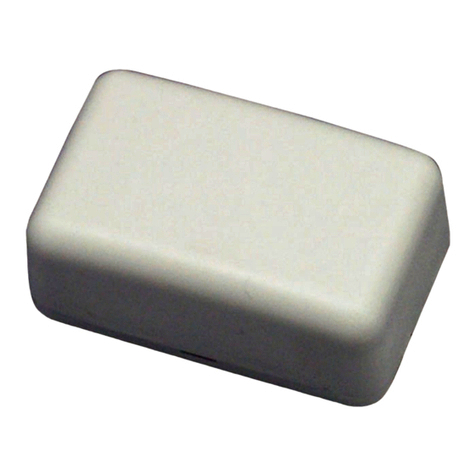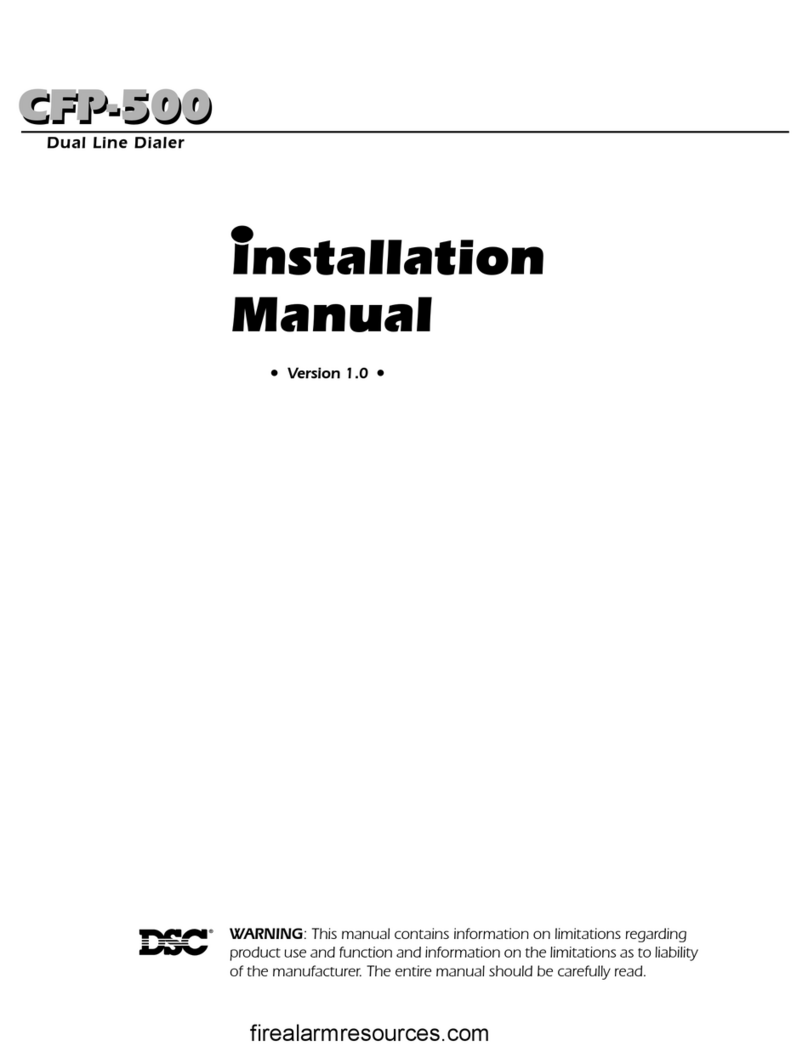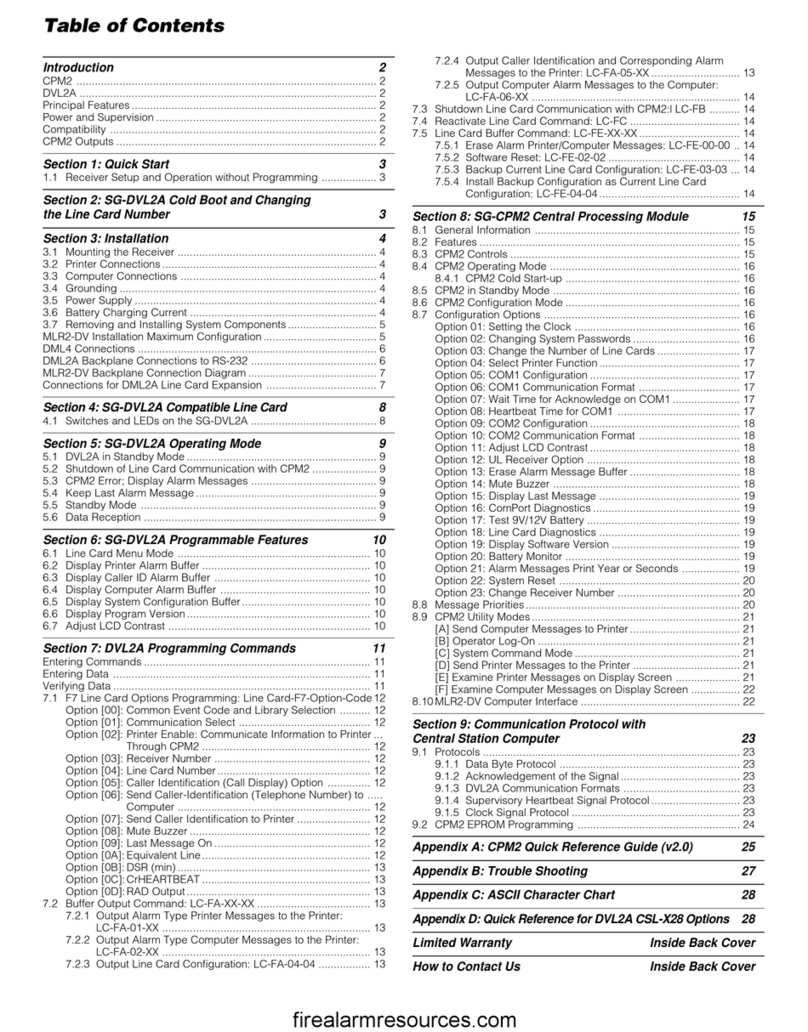
2. Install the batteries negative (–) side first, with the correct polarity, as shown below.
Setting the Dip Switches
The detector has installer-selectable dip switch settings as shown.
Dip Switch 1– Not Used
Dip Switch 2– Level 1/Level 2 Detection
This is a sensitivity selection dip switch which may be used to
optimize false alarm immunity for certain acoustic environments.
The detector is factory set for Level 1 detection (Dip Switch 2 =
OFF). This is the highest sensitivity setting for the detector, and will
be suitable for most applications.
For rooms which are smaller, and contain a significant number of sound-reflective surfaces
(such as bathrooms, kitchens, entrances, etc.), Level 2 detection (Dip Switch 2=ON) provides
a reduced sensitivity setting which may be more appropriate.
Selecting a Mounting Location
The detector is omnidirectional, providing 360 degree coverage. Coverage is measured
from the center of the detector to the point on the glass farthest from the detector.
Guidelines for optimizing detection and avoiding false alarms
• For optimum protection, the detector should have a direct line of sight to the
protected glass.
• Window coverings will absorb sound from the shattering glass. In these cases,
mount the detector as close as possible to the protected glass, either on an
adjacent wall, the ceiling, or behind the window covering if possible.
• The detector should be mounted at least 1.8m (6 feet) off the ground.
• Do not mount the detector on the same wall as the protected glass.
• Avoid installation near noise sources, such as speakers or other objects which
produce sounds continuously.
• Do not install the detector beyond the maximum recommended range, even if the
AFT–100 simulator shows additional range - future changes in room acoustics
could reduce the range.
• Application on 24 hour loops should be avoided unless the location is unoccupied.
• Test false alarm immunity by creating any sounds in the room which will likely
occur when the alarm system is armed.
Note: Test the detector thoroughly for proper placement using the AFT-100
Glassbreak Simulator. Other simulators may trip the unit, but will not pro-
vide accurate test results.
Testing the detector
Perform the following tests with each WLS912 detector to ensure that it is mounted in the best
possible location.
Detection Test:
1. Place the detector in test mode by momentarily pressing down on the tab on the
base plate, as shown. The LED will blink periodically to indicate that it is
operating in test mode. You can end the test mode by momentarily pressing the
tab on the base plate. Test mode will end automatically after 10 minutes.
2. Use double-sided tape to temporarily mount the
detector in the selected location.
Note: The detector will not respond to the glass-
break simulator unless the test mode operation
has been enabled by momentarily pressing down
on the test mode tab on the base plate.
3. At the window to be protected, test the detector using the AFT–100 Glassbreak
Simulator. The AFT–100 Glassbreak Simulator generates plate or tempered glass
sounds. Use the plate glass setting if you are unsure of the glass type. Observe the
following when testing the detector:
• If the WLS912 detects the sound generated by the AFT-100 three times in a
row, the detector is in a good location. If the detector does not respond each
time, relocate the detector and repeat the test.
• If the windows in question are covered by drapes or blinds, place the AFT-100
tester behind the closed window coverings, and then activate it. If the drapes
prevent reliable detection, we suggest that the detector be mounted behind the
drapes either on an adjacent wall or on the ceiling.
• If there are multiple windows, or one large window, activate the tester at the
furthest point on the glass from the detector.
Receiver Test:
You also need to perform a Module Placement Test to ensure that the selected location is in
range of the wireless receiver (see the Placement Test instructions in the installation instruc-
tions for your receiver).
1. Press and hold the test mode tab for 5 seconds
2. Release the test mode tab. The keypad will display the test result.
Enrolling the WLS912
On the back of the detector, there will be two serial numbers: a five-digit number and a six-
digit number. Please refer to your receiver installation manual for information on which serial
number should be enrolled. NOTE: If using a WLS900 system, you must use the five-
digit serial number.
NOTE: The WLS912 is compatible with the PC5132 and the PC4164. The
WLS912-433 is compatible with the NT9010(A)-433 and the PC5132(A)-433.
Mounting the Detector
Once you have found a location that is within range of the receiver, you can mount the
WLS912.
1. Remove the mounting plate from the detector.
2. At the selected mounting location, place the mounting plate on the wall (with the
tab facing down, or to the right), or on the ceiling. Mark
the screw locations. Wall anchors should be used for all
screw locations.
3. Secure the backplate to the wall.
4. Slide the detector onto its backplate.
5. Repeat the installation test using the AFT–100 tester to
confirm proper operation.
NOTE: Test unit at least once yearly. UL Listed for resi-
dential applications.
Dip Switches






